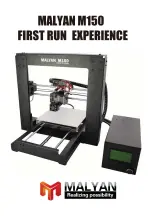
T480
Programmer’s Guide
T480
Extended Printer Control
100-14362
Rev A
Page 221
Description
The [ESC] + H command will put the printer into UTF-16BE character
encoding mode of operation. If you wish to access characters above 255, you must
select a Unicode encoding such as UTF-16BE.
UTF-16 is the most straightforward way to access characters above 255, sending
two 8-bit bytes that form a 16-bit address to access the desired character.
UTF-16BE uses the big-endian method of sending the two bytes. This method
sends the high byte first and then the low byte.
Note:
Once selected, all information sent to the printer must then use this
encoding, even for non-print commands
Function
Initiate Unicode UTF-16LE Encoding
All
ASCII
[ESC] + L
Hexadecimal
1BH 2BH 4CH
Decimal
<27> <43> <76>
Description
The [ESC] + L command will put the printer into UTF-16LE character
encoding mode of operation. If you wish to access characters above 255, You must
select a Unicode encoding such as UTF-16LE.
UTF-16 is the most straightforward way to access characters above 255, sending
two 8-bit bytes that form a 16-bit address to access the desired character.
UTF-16LE uses the little-endian method of sending the two bytes. This method
sends the low byte first and then the high byte.
Note:
Once selected, all information sent to the printer must then use this
encoding, even for non-print commands
Function
Initiate Unicode UTF-8 Encoding (MBCS)
All
ASCII
[ESC] + M
Hexadecimal
1BH 2BH 4DH
Decimal
<27> <43> <77>
Description
The [ESC] + M command will put the printer into UTF-8 character
encoding mode of operation. If you wish to access characters above 255, You must
select a Unicode encoding such as UTF-8.
UTF-8 uses a Multiple Byte Character Sequence (MBCS) to identify the desired Unicode
character. This encoding method is less straightforward. This method uses unique bit
sequences at the MSBs of a byte to determine its location and meaning within the MBCS
encoding. See the table below for more information.
Note:
Once selected, all information sent to the printer must then use this
encoding, even for non-print commands
Scalar Value
1
st
Byte
2nd Byte
3rd Byte
3rd Byte
















































